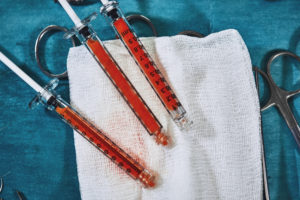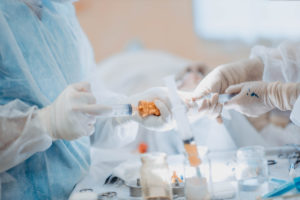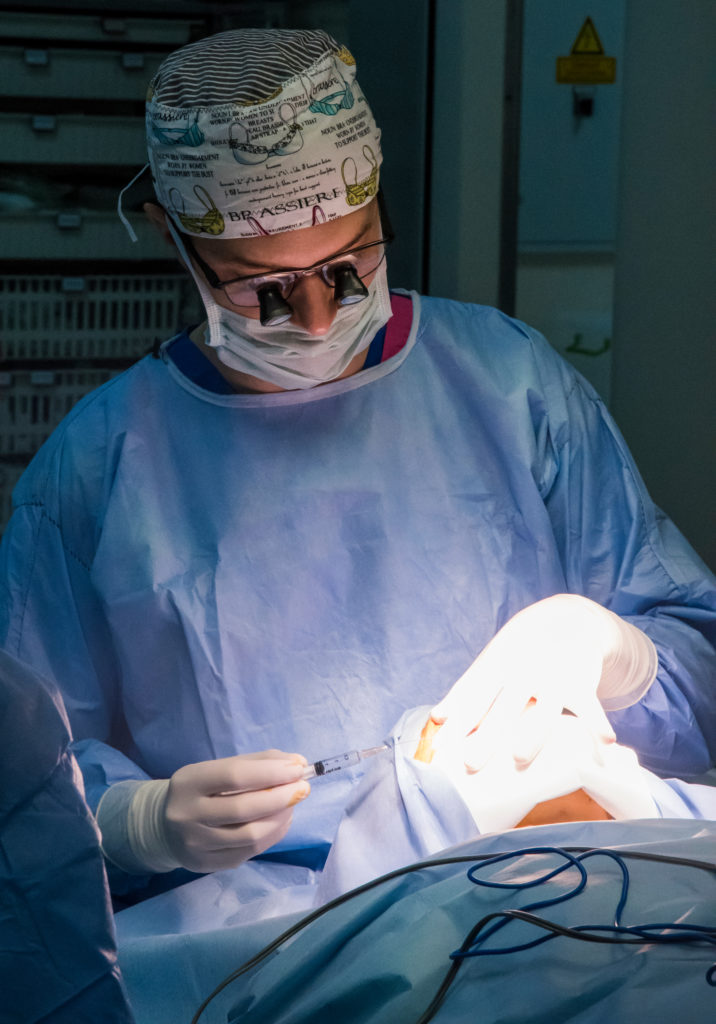Is Fat Transfer to the Breasts the Future of Breast Augmentation
A fat transfer to the breasts, sometimes called a natural breast augmentation, a fat transfer breast augmentation, or  fat grafting, is a two-part process that takes excess, unwanted fat from one part of the body through liposuction and injects it into the breast to enhance their size and shape. The results can be more natural in look and feel than implants and it leaves no scarring on the breast. Plus, there’s also the sculpting benefits that come with liposuction. It’s often chosen by women who want to enhance their breasts but are hesitant to undergo typical breast augmentation with implants because of the maintenance and risks associated.
fat grafting, is a two-part process that takes excess, unwanted fat from one part of the body through liposuction and injects it into the breast to enhance their size and shape. The results can be more natural in look and feel than implants and it leaves no scarring on the breast. Plus, there’s also the sculpting benefits that come with liposuction. It’s often chosen by women who want to enhance their breasts but are hesitant to undergo typical breast augmentation with implants because of the maintenance and risks associated.
The procedure is not without its controversies, particularly, surrounding breast cancer risk and detection. The truth is that because fat transfer for breast augmentation is not yet standardized, its safety and outcome are entirely dependent on your surgeon’s expertise. Even so, the data shows that the procedure has a good long-term safety profile and there’s no evidence that fat grafting increases breast malignancy risk. This is why it’s extremely important to choose a board certified plastic surgeon with tons of experience performing fat transfers to breasts.
While overwhelmingly an extremely safe procedure, there are minimal risks involved, mostly in the liposuction part of the procedure, with the biggest risk being contour irregularity. That is, dimpling or rivets in the skin from not performing the liposuction properly. Dr. Barrett uses the S.A.F.E. liposuction technique that involves breaking up the fat very carefully before removing it, using small cannulas, and what may seem obvious, but unfortunately isn’t always the case with some surgeons: taking his time during the procedure. Additional risks include:
- Infection, both with the liposuction procedure itself and when you’re transferring the fat, as there’s no blood supply in removed fat;
- Scarring is of course a risk with any surgical operation;
- A hematoma is also a known risk for blood collection after liposuction or the fat transfer;
- Nipple sensitivity is always a risk during any kind of surgery around the areola;
- Loss of breast feeding ability is also a risk, though it’s important to note there’s no evidence that shows the loss of breast feeding ability.
In other words, any time you do surgery on the breast you can potentially affect the functionality of the breast. Additionally, if not performed properly, fat transfers can result in oil cysts, where the fat accumulates and needs to be drained. Finally, while not a health risk, there’s also the chance you won’t get the results you anticipate. Typically this is due to the fat not all “taking”, resulting in a breast size smaller than desired.
 When determining your ideal fat transfer breast augmentation results, having realistic expectations for your surgical outcome is very important to your overall satisfaction. Dr. Barrett has gathered an assortment of natural breast augmentation before and after images you may want to browse to get a fuller scope of not only the type of outcome you can expect, but also his work in breast augmentation and reconstruction. Additionally, Dr. Barrett has a carefully curated postoperative scar regimen to ensure the only reminder of your procedure are your sculpted results.
When determining your ideal fat transfer breast augmentation results, having realistic expectations for your surgical outcome is very important to your overall satisfaction. Dr. Barrett has gathered an assortment of natural breast augmentation before and after images you may want to browse to get a fuller scope of not only the type of outcome you can expect, but also his work in breast augmentation and reconstruction. Additionally, Dr. Barrett has a carefully curated postoperative scar regimen to ensure the only reminder of your procedure are your sculpted results.
Do you want to learn more about Barrett Plastic Surgery? Keep up to date by subscribing to our blog and following us on social media at Twitter, TikTok, Instagram, Realself, YouTube, Snapchat, Yelp, and Facebook for updates.
Thank you for visiting!




0